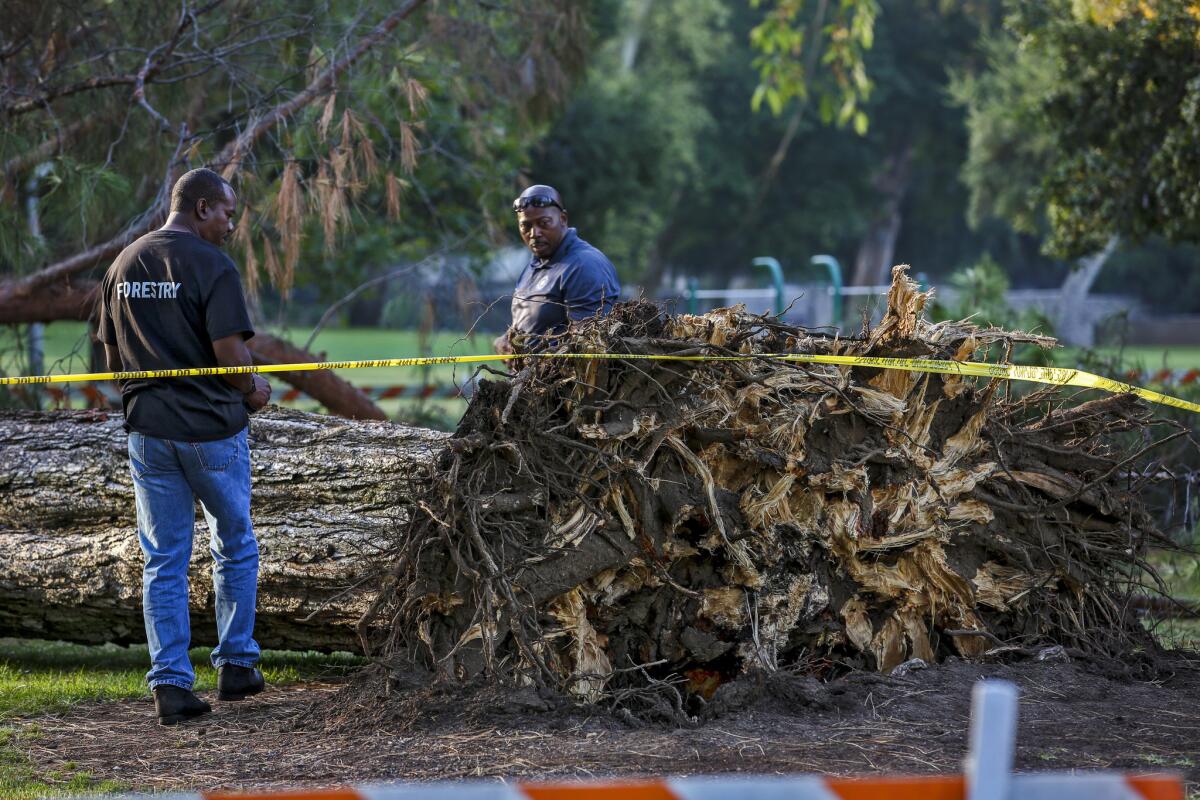Drought, then rain undermined Pasadena tree that fell on children

Two arborists from the city of Pasadena try to examine the tree that fell near the Kidspace Children’s Museum, trapping 33 children beneath its branches.
- Share via
Prolonged drought, a lack of strong roots and a burst of heavy rain were the main reasons an 85-foot pine toppled and injured children in a Pasadena park last month, an arborist’s report said Thursday.
The massive, city-owned Italian stone pine came crashing down on young day campers outside the Kidspace Museum at Brookside Park on July 28. Firefighters, police officers and bystanders worked feverishly to free the 33 children caught beneath its branches.
Two of the children were critically injured but were recovering, authorities said.
Arborist Ted Lubeshkoff, hired by the city to investigate why the tree fell, found several contributing factors, including a slight lean and an inadequate root system stressed by prolonged drought. Last month’s mid-drought cloudbursts added weight because of the tree’s increased water uptake.
The combination of these factors, the arborist said in his seven-page report, “most likely contributed to the tree’s instability and failure.”
The arborist found that, despite its 42-inch trunk and 60-foot canopy, the tree did not have wide-spreading anchor roots.
The thirsty tree may have absorbed too much water in a short period.
“California is currently in its fourth year of drought, where it is receiving abnormally low rainfall amounts. This probably resulted in the Italian stone pine not receiving adequate amounts of water,” he wrote.
Then Pasadena received 0.61 inches of rain just 10 days before the tree failure.
“Trees uptake large amounts of water into their system through their roots and release the water through their leaves or needles, a process known as evapotranspiration. The Italian stone pine probably could not release water as quickly as it was taking water in, causing a substantial increase in weight throughout the tree,” he said.
The arborist said he found proof of that from the sap still oozing from broken limbs and the trunk approximately 20 hours after the tree fell.
Lubeshoff found that while the tree had no evidence of fungus, it had some old fire damage possibly from hot barbecue coals.
City officials said that based on the report, there is no way they could have foreseen the tree’s toppling.
“While the tree was leaning, that didn’t cause it to fall. The reasons why it fell weren’t visible,” said William Boyer, a Pasadena spokesman.
To Follow Southern California news @lacrimes
More to Read
Sign up for Essential California
The most important California stories and recommendations in your inbox every morning.
You may occasionally receive promotional content from the Los Angeles Times.









